Mangrove roots at low tide at the Puerto-Princesa Subterranean River National Park in the Philippines
I like trees, and all things about them. Tree trunks, leaves, fruits and nuts, and homes for birds and squirrels. Wherever I walk, I notice where and how trees are placed by nature or man. A canopy or boulevard of trees gives respite from the sun and heat. For a short rain, it provides shelter.
Eye of a woodworker
The camino trail ribboned through many forests. They provided comfort and shelter from the sun and wind. Despite my life changing walk through Spain, I am still a woodworker. I marveled at the olive and almond trees, piorno flower bushes, eucalyptus trees, oak and cork trees. Old olive trees are turned into furniture at the end of their usefulness.
Beginning in the 16th century, large amounts of mahogany wood, extracted from forests in the Caribbean and South America were used to build furniture, great houses and mansions, church pews, massive cathedral organs, staircases, and boats. Much of the timber and lumber was exported to Europe and North America by major colonizers, import companies, speculative investors and their governments.
Many wood species were used to make furniture, buildings and homes, bridges, toys, plates and utensils, jewelry, rubber and resins, medicines, and architectural and industrial models for manufacturing cars, planes, and tools. Even dentures were made from wood.
The rapid and abusive depletion of these and other trees continued until the alarm was raised that they were in danger of extinction.
What is a creator to do?
Today, progress made by people and nations occupying these once resource laden lands presents a dilemma. It seems that when the land’s sons and daughters emerged to replace the robber barons of old who made massive fortunes from the exploitation (often violent), the supply of trees nearly disappeared.
New groups of inventors and creators are replacing and superseding past users who were not good stewards of the realm. However, these innovators and future caretakers of the planet are facing restrictive rules that stifle the solution making process.
Today, there is conflict between indigenous people who want to preserve their lands and way of life, and companies, manufacturers, and governments who continue to exploit and destroy resources for great financial gain. Overuse and the resultant erosion of the planetary surface continues to wreak havoc.
Sadly, former colonial powers and related entities retain control and distribution of the resources on many ancestral lands where the new creator’s and inventor’s access is restricted or even nonexistent.
I like trees
When I walk around my neighborhood or any other place in the world, I note the condition of the trees.
I take pictures of “dead” trees because it affects me. It feels as though I and the world have lost an old friend.
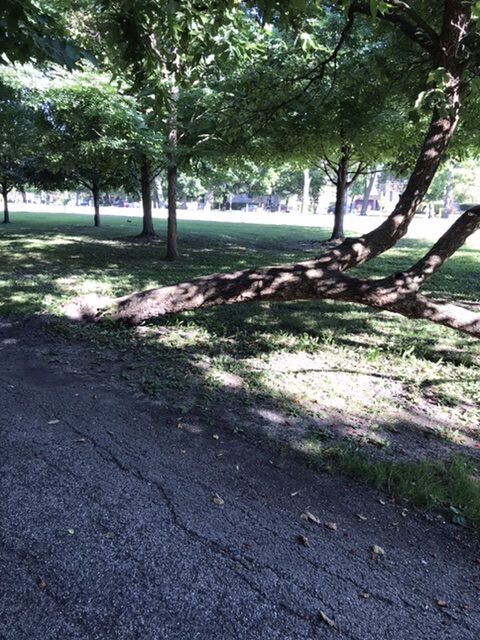
Was a tree downed by a lightening strike during a storm or by disease or pestilence that eventually caused that unfortunate creature to buckle?
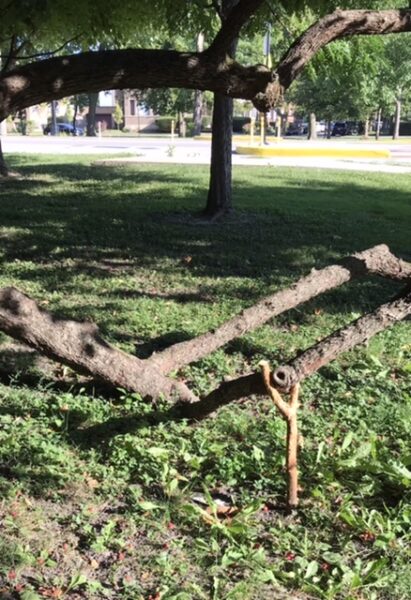
Deer in the woods
I am fortunate to live near a forest preserve with walking trails. Animals, birds, insects and butterflies live in these woods all year round. Nonetheless, deer enter the neighborhood to eat berry trees, flowers and plants.
Deer families often cross a busy road to enter the neighborhood. The irony is while exploring and walking in the tree-blanketed forest preserve, I occasionally cross paths with deer headed in the opposite direction toward the concrete jungle.
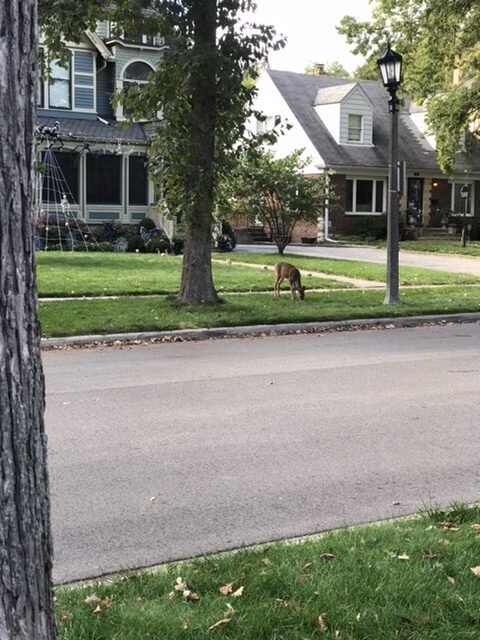
It likely crossed a few roads to get there from the nearby forest preserve.
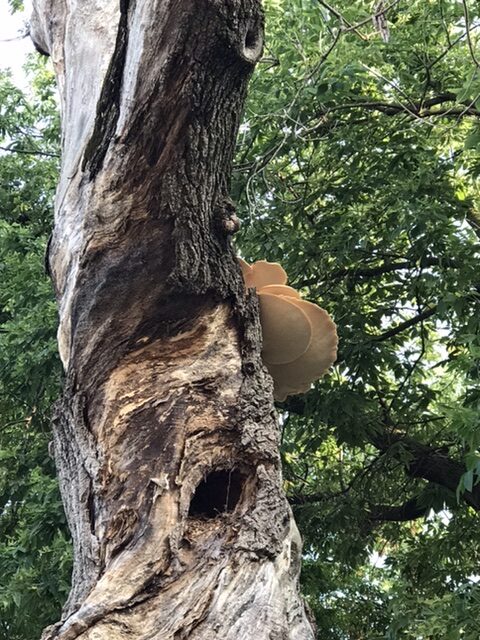
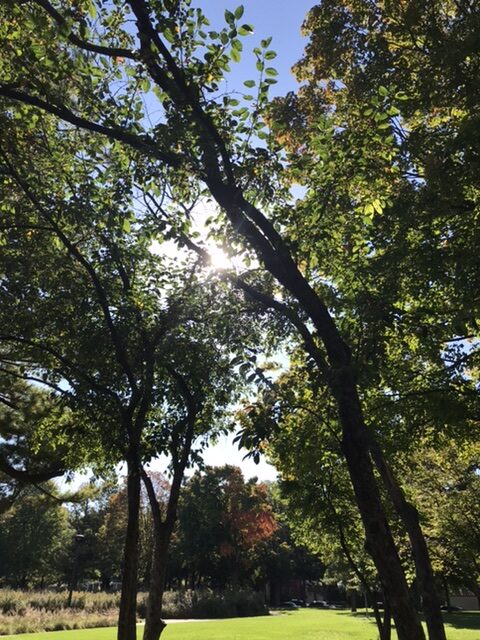
I walked past a few lumber yards on the camino trail in Spain.
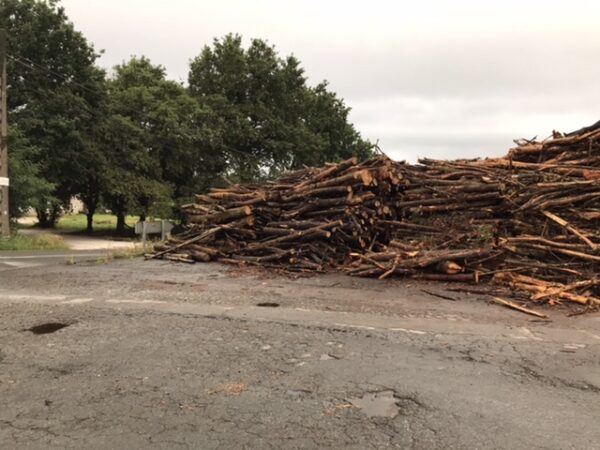
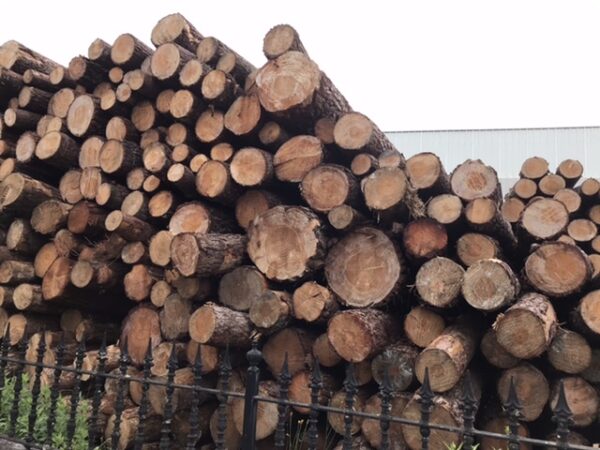
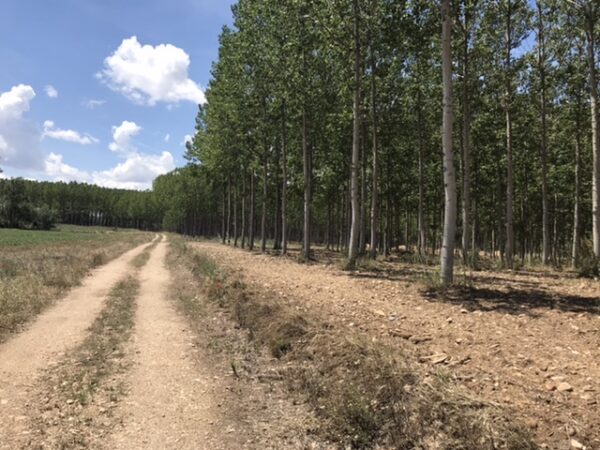
Let’s count and consider
- Endangered species: fauna, fawn, and human,
- Constraints on minorities and indigenous people starting businesses that utilize wood due to CITES and re-classification of endangered wood species,
- Requirements to address the needs of all people on the planet through building, recycling, and sustaining resources
… because our health and lives depend upon the solutions.
Hope for the future
I am hoping to change the paradigm, push people to dream, and undergo risk. It’s not because you are rich that you should waste material. It’s not because you are poor that you should not try to create quality. Everyone deserves quality, everyone deserves luxury, and everyone deserves comfort. We’re interlinked and concerns in climate, democracy, and scarcity are concerns for us all.
– Francis Kéré**
**Kéré Architecture: website
Three Trees
If our collective knowledge and education cannot develop solutions that might improve the planet and humankind’s chances to survive and stem irreversible ecological disaster, then what was it all for?
Read about mangroves, one of three tree species that are important in the fight against climate change:
• Brazil nut tree – Amazon rainforest
•• Stilt mangrove trees – Indonesia
••• Afrormosa or African Teak tree – Congo basin rainforest
It is a thoughtful and encouraging look at these enormous planetary ecological systems.
When afforded respect and care, trees can live and die naturally, reproduce and exist. The desired result, lumber and other wood byproducts can then be thoughtfully utilized for practical and artistic purposes by future generations.
Baadaye
Shirley J 💚
Read the rest of the stories about my pilgrimage to Santiago de Compostela, Spain: here.
——–
More about how mangroves are helping a village in Kenya manage and store carbon.
Featured image: Mangrove at low tide; by Dan Lundberg, cc by-sa 2.0 wikimedia commons).

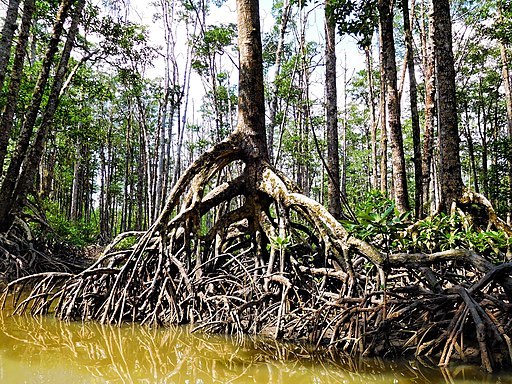
2 thoughts on “👣 Trees”
Keep it coming, thanks.
Thank you for that!👣🌹